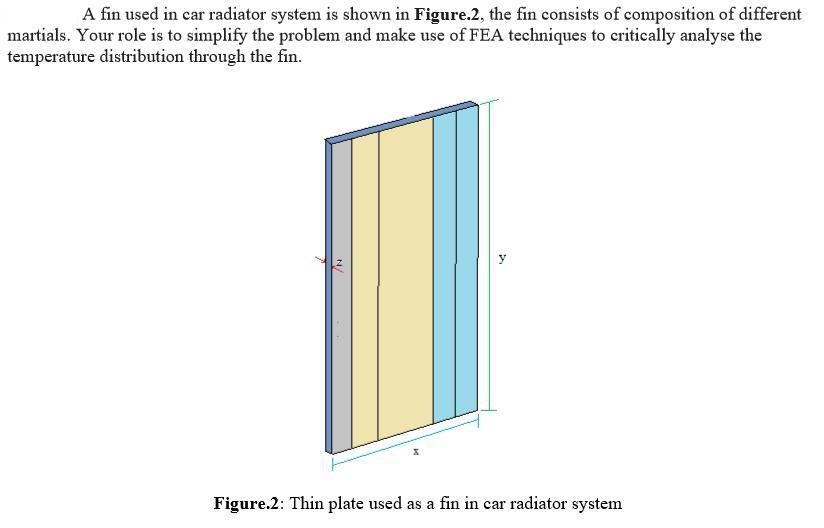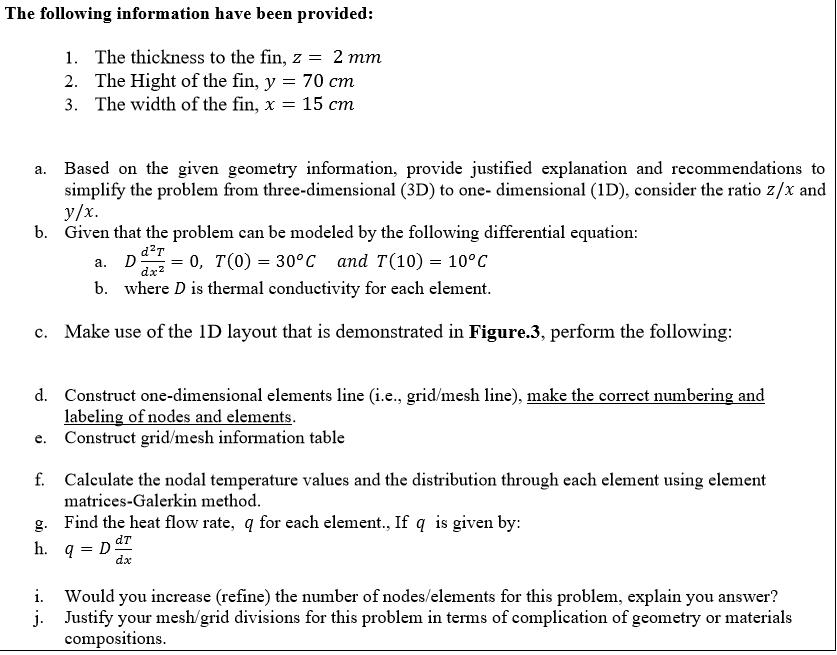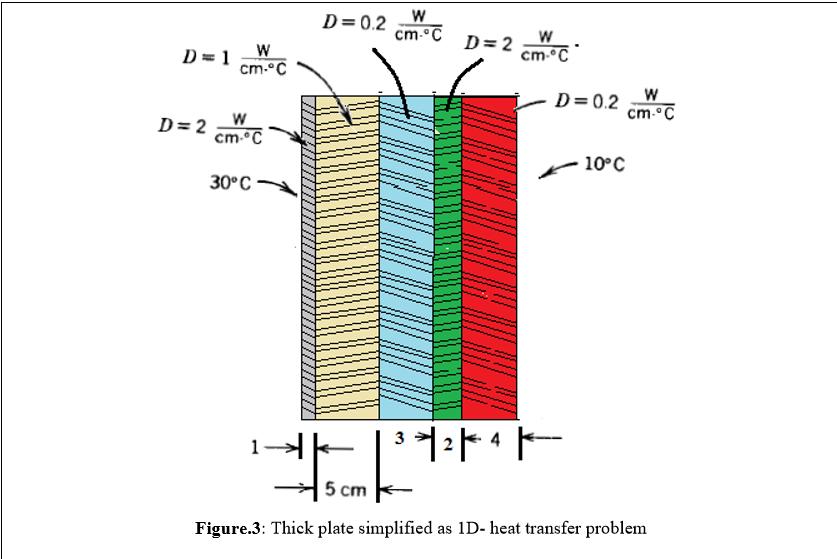Answered step by step
Verified Expert Solution
Question
1 Approved Answer
A fin used in car radiator system is shown in Figure.2, the fin consists of composition of different martials. Your role is to simplify

A fin used in car radiator system is shown in Figure.2, the fin consists of composition of different martials. Your role is to simplify the problem and make use of FEA techniques to critically analyse the temperature distribution through the fin. y Figure.2: Thin plate used as a fin in car radiator system The following information have been provided: 1. The thickness to the fin, z = 2 mm 2. The Hight of the fin, y = 70 cm 3. The width of the fin, x = 15 cm a. Based on the given geometry information, provide justified explanation and recommendations to simplify the problem from three-dimensional (3D) to one-dimensional (1D), consider the ratio z/x and y/x. b. Given that the problem can be modeled by the following differential equation: dT a. D =0, T(0) = 30C and T(10) = 10C dx b. where D is thermal conductivity for each element. c. Make use of the 1D layout that is demonstrated in Figure.3, perform the following: d. Construct one-dimensional elements line (i.e., grid/mesh line), make the correct numbering and labeling of nodes and elements. Construct grid/mesh information table e. f. g. h. Calculate the nodal temperature values and the distribution through each element using element matrices-Galerkin method. Find the heat flow rate, q for each element., If q is given by: dT dx q = D i. Would you increase (refine) the number of nodes/elements for this problem, explain you answer? j. Justify your mesh/grid divisions for this problem in terms of complication of geometry or materials compositions. D=1 D=2 W cm-C W cm. C 30C D=0.2 W cm-C D=2 W cm-C 3|2|4| D=0.2 W 10C cm-C 1 5 cm Figure.3: Thick plate simplified as 1D- heat transfer problem
Step by Step Solution
★★★★★
3.53 Rating (163 Votes )
There are 3 Steps involved in it
Step: 1

Get Instant Access to Expert-Tailored Solutions
See step-by-step solutions with expert insights and AI powered tools for academic success
Step: 2

Step: 3

Ace Your Homework with AI
Get the answers you need in no time with our AI-driven, step-by-step assistance
Get Started




